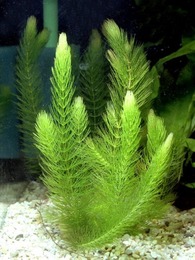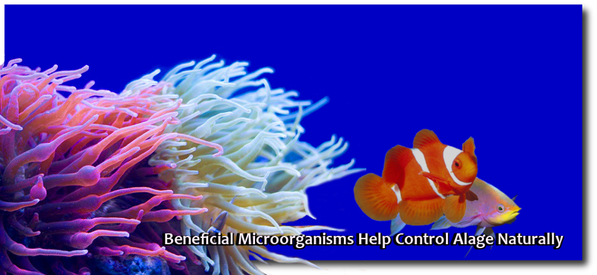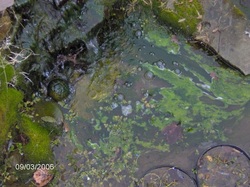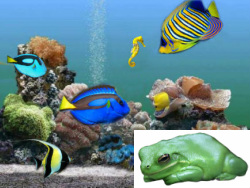Which Freshwater Aquarium Plants Should I Use by Clifford Woods  Vegetation in freshwater fish tanks makes it look fantastic and live, especially when properly lighted. They not only enhance the appearance of your aquarium, but also help with the all round natural stability of your tank's environment.
Much like plants above water, they help in the removing carbon dioxide and increase oxygen. Furthermore, they also assist in sustaining the chemical harmony of your tank's water by decreasing nitrate quantities.
Needless to say, proper care needs to be taken when adding any new component into a fish tank. With vegetation for freshwater fish tanks, exceptional care must be taken in the decision process to make sure that there are absolutely no unwanted effects to the fish, other plants, or the purification system due to their introduction.
To guarantee the best selection, get your plant life from a reliable supplier like a local fish shop; preferably one you know well. The plants should seem healthy at first glance. Any sort of wilting or abnormal browning may be indications of an incorrectly maintained plant or even a contaminated plant.
There are a few main types of plants that you can get for freshwater fish tanks. They are as follows:
Ferns and Mosses
Ferns and mosses can thrive with no need for a complicated root system. Therefore they are able to attach themselves to specific things like stones, decorations and practically any substrate present within your aquarium. These are non-blooming and supply great cover leaves for fish searching for a hiding place.
Stem Plants
Stem plants are a type of flowering plant; however they have a tendency to grow in a far more vertical manner than rosette plants which will be discussed below. These stem plants are ideal for setting up a forest-like background for your fish tank. It is advisable that you put them to the back of the aquarium, providing a beautiful background without hindering your view into the fish tank.
Rosette Plants
Rosette plants are thought to be great decorative plants. Varieties within this group will exhibit a fantastic array in colors. These will require special focus in the way they are attached into your substrate, as their root system is far more extensive than the roots of ferns. With this kind of plant life you should make sure you have a double layer of substrate in your tank.
A two inch base level needs to be applied specifically to deal with the nutritional requirements of this type of plant. Laterite is a red tropical soil and is extremely ideal for plants with extensive roots. Over the nutritional level of the substrate, a one inch covering on top of the substrate, of your preference, can be used.
Regardless of the variety of vegetation that you choose to put in your fish tank; you should supply sufficient illumination for their photosynthesis procedures to easily take place.
Furthermore, it is advisable to be on the lookout for algae breakouts as algae compete with your vegetation for nutrients. Be sure that you eliminate any algae development from the sides of the aquarium. If algae are located on the plants themselves, softly scrub the afflicted plants to get rid of the algae. A probiotic aquarium solution with beneficial microorganisms would be a good option for algae control and will not harm your plants.
Finally, if the plants are growing out of your aquarium, do prune them to keep them at a controllable and decent size. Plants for freshwater fish tanks do not need to be frustrating to deal with as quite a few beginner fish tank fans often consider them to be. With a little research and using the basic maintenance guideline as above, anyone can take pleasure in the visual elegance and environmental assistance which only live plant life can offer.
Algae Management in Freshwater Aquariums
 By Clifford WoodsAn aquarium tank can be quite the exceptional addition to a home or workplace. There isn't anything more relaxing than viewing fish swimming in harmony through the clear, dazzling tropical water. On the other hand, there is practically nothing more unpleasant than an aquarium tank abundant with algae.
Below are a handful of concerns and tips to assist with algae management.
Just about all fish displays contain algae. A small bit of it is not necessarily harmful, however if it isn't controlled algae can multiply quickly and take control of your freshwater tank which is extremely troublesome to clean, not to mention unhealthy for the fish.
Green algae are normal for most freshwater tank owners. The two main varieties, green dot and hair, can be time intensive in addition to difficult to eliminate from the aquarium.
These algae grow quickly in fish tanks that get an excess of sunshine. The darker types of algae, such as black brush, generally grow soon after the initial set-up of the tank.
The algae development in fish tanks that have already been set up for a longer period of time may be related to problems with the level of phosphate or nitrate in the water.
The growth of these algae may also linked to excessive amounts of light. In order to eliminate it from the fish tank, in most cases you have to clean the entire tank extensively, decrease light exposure, and also make certain that the water condition is at a suitable temperature.
Blue-green algae and red brush are two additional varieties of algae that may develop in a fish tank. The red brush variety generally has a tendency to form in fish tanks having higher pH levels. Blue-green algae are a slimier type which can be dangerous to both vegetation and fish in the tank.
One of the better processes to inhibit the development of numerous algae would be to manage lighting. For algae management, never place fish tanks close to windows and be sure to reduce the lighting to eight hours on a daily basis. Employing a lighting timer is a fantastic way to supply your fish tank with suitable quantities of light.
Much like your fish, algae have to consume to live. Algae develop best through taking in phosphorus, potassium, and nitrogen. You have the capability to significantly enhance algae management in freshwater fish tanks by making certain that your tank is not overwhelmed by fish waste products, excessive food, or rotting vegetation. Additionally, perform water adjustments regularly and use a properly measured filtration system.
Incorporating algae consuming agents to your aquarium would be a good option. Snails and algae-eating species of fish are able to assist in the management of algae within the tank.
You should be aware that snails can populate remarkably quickly, however with proper control including a snail and an algae-consuming species to a fish tank could very well be an excellent idea. Take note that when all of the algae are consumed, you are going to have to feed these fish with store-bought food.
It is not unusual for algae to start to re-populate within a clean fish tank during a time span of just three weeks. For regular algae regulation, be mindful with regards to overfeeding your fish, promptly remove any dead fish from the tank, be aware of the amount of light that the aquarium receives, and also use some type of filtering method.
Additionally, remove any obvious algae with a scrubber designed for this sort of cleanup. A really simple way to eradicate algae from a freshwater fish tank would be to apply a probiotic algaecide.This type of solution is perfectly safe for your fish and actually benefits the water in numerous ways due to the beneficial microorganisms contained with the product.

What is Phosphate?
 By Clifford Woods
Phosphates, which contain phosphorus, are essential nutrients that contribute to the growth and metabolic reactions of all animals and plants. The quantity of phosphorus can either increase or limit growth. Since it is essential to the growth of plants and animals, an imbalance in the amount of the natural growth of phosphorus can produce harmful changes to the environment. This is when it becomes a job for a phosphate remover to handle.
Contributing Factors In Phosphates Overgrowth
The internal contributor in the growth of the presence of phosphates in your fish pond is from the mineralization of dead matter, such as plants, uneaten food, feces, fish slime, bacteria, etc. The rotting food particles or dead plant materials settle either within the filter or on the substrate. Vacuuming the gravel or rinsing filter materials every time you change the water in your pond or tank will substantially decrease the potential accumulation of phosphate deposits. The probable external sources, on the other hand, are additives such as frozen fish food, carbon or pH stabilizers.
Effects Of Phosphates In Fish Ponds
For people who raise fish on ponds, the elevated presence of phosphates means algae invasion and that is a big threat to the lives of your fish. Using a phosphate remover is ideal in this kind of pond situation. Partially, changing the water in your fish pond more frequently can also help. Once the growth of water weeds and algae in your pond becomes uncontrollable, they will dominate the use of oxygen until the water in your pond will not be able to support the life of your fish any more, leaving them to die. So, use phosphate removers as soon as the presence of phosphorus becomes threatening.
Addressing The Issue With Phosphate Removers
The ideal amount of the presence of phosphates in your fish pond should be below 0.005 ppm. A phosphate remover will control the level of phosphates in your pond by reducing the amount of algae that grows in it.
When phosphate removers are applied into the water, it basically traps the phosphates and immobilizes them, making them insoluble nutrients. Phosphates in ponds are harder to eliminate, since you cannot control what products people use in their lawns and farms.
That said, you can control the levels by always ensuring that your pond is clean and using a phosphate remover often. With persistent testing and removal, your pond can have a good water quality for your fish and other marine species to thrive better.
For salt-water aquariums, it will maximize the coral growth in it. When buying them, make sure that you thoroughly check the brand specifications. Most often, it comes as phosphate mesh media bags or reactors.
Those that come in reactors need to be installed, while those that come in mesh media bags are packed with phosphate removal media and employed inside the sump or canister filter.
If you want to be rid of a persistent phosphate problem, be vigilant in eliminating the causes of its overgrowth in the first place instead of always relying on a phosphate remover to do the job for you.- Avoid over-feeding your fish to reduce or eliminate the presence of uneaten foods. Choose a brand of fish food with the lowest levels of phosphates.
- Perform tank maintenance regularly by vacuuming the bottom of your ponds or tanks to remove plant decay, fish waste, and uneaten food.
- A filter’s job is to skim all dirt, so make sure you always remember to clean it, too.
Keep all these important maintenance steps in mind for your fish to have smooth-sailing lives.
Clifford Woods is the CEO of Effective Environmental Services and Organic Environmental Technology. See more info here: http://www.effens.com
We brew Beneficial Microorganisms that eat toxins in the environment and offer Environmentally Friendly products.
Aquariums And Their Value
 By Clifford Woods
An Aquarium is the name given to the container where pet fishes are kept. Aquariums are mostly rectangular shaped boxes with at least one transparent side. The material used for making these fish containers is either glass or acrylic. An aquarium is considered a very useful decoration item as it can add a lot of beauty to the interior design of any home or office.
Not only is it great for beautifying the place but it also provides an interesting object for the people to look at while they are waiting. This is the reason why you will always find a clean and well-kept aquarium placed in a hospital or a clinic where patients have to wait for their turn to see the doctor.
An Aquarium having tropical fish and plants in it is a real treat for young children. Since small kids love seeing fish moving around in the water, they get fascinated by the healthy fish swimming in the aquarium and feel relaxed. It has been proven by research that a fish tank can really help in calming down hyperactive children.
According to the research, a hyperactive kid when placed in front of a beautiful and clean aquarium is going to stop wandering here and there and is going to get lost in the amazing world of fish and aquatic plants on display in the aquarium and hence, his hyperactivity is going to subside pretty quickly.
From the educational point of view as well, aquariums can prove to be great for the kids. The children can learn a lot about fish, their habitat, their food and many other interesting facts about these creatures if they have an aquarium at their home. Moreover, petting fish in an aquarium is a healthy hobby for the kids as well.
Not only is this hobby going to keep them engaged, they will learn a number of important things from it as well. They would learn to take care of their pets and would find out the importance of keeping things clean, tidy and alive as well.
Besides being a great decoration piece and an educational and relaxation equipment for hyperactive children, aquariums offer many environmental benefits to people as a whole. A clean aquarium is very pleasing to the eye and brings a person closer to nature.
He becomes aware of the natural beauty and begins to change his views about environment and saving the creatures living it. Moreover, an aquarium can help a person in developing a healthy interest in fish and marine life urging him to do something for the betterment of other aquatic animals present in nature.
In addition to all these benefits, aquariums also provide tranquillity and peace to people. One look at the healthy fish swimming in the water is going to cheer you up and you will be immersed in the beauty of the scene and tend to forget all your worries and tensions for a while. Because fish do not create a lot of noise, they are ideal pets for people who like peace and do not want to get disturbed by the barking of a dog or the meowing of cats.
In short, aquariums are great for a family and add a lot of value and beauty to a house. They are excellent for educating young children and can be used to calm down hyperactive kids as well.
Clifford Woods is the CEO of Organic Environmental Technology.
You can find out more about our Organic Aquarium Cleaner
We brew Beneficial Microorganisms that eat toxins in the environment and sell environmentally friendly products
|






 RSS Feed
RSS Feed